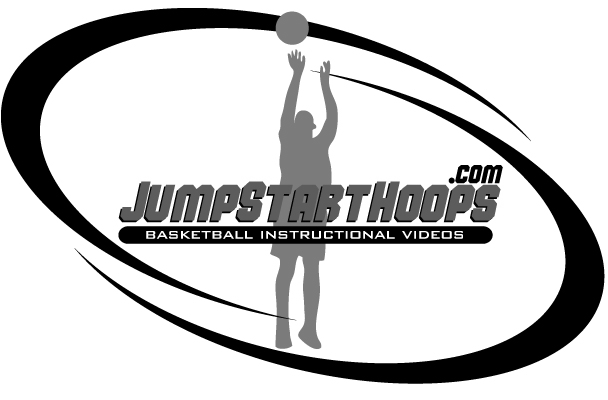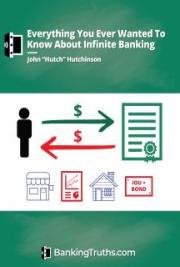
"Coach Godwin gives key insight into what it takes to
fundamentally score points day in and day out. This book
is the student-athlete manual for becoming a great scorer."
Josh Pastner- Assistant Coach University of Memphis
Tigers (2008 Final Four)
Everyone Hates
a Ball Hog
But They All
Love a Scorer
____________________________________________
The Complete Guide to Scoring Points On
and Off the Basketbal Court
Purchasing Options
JumpStartHoops.com
Amazon.com
Coach Godwin

Amazon.com
This book is dedicated to my mother, Rhonda who
supported me every step of the way. Thanks for planting the
seeds of success in my life. I am forever grateful.
You are truly my Hero!!!
CONTENTS
Introduction
Pre-Season
Lesson One
The Godwin Theory 2
Lesson Two
You Are What You Watch 12
Lesson Three
Graduating from Shooter to Scorer 20
Lesson Four
The Locker Room View 28
Game Time
Lesson Five
Be Quick but Not in a Rush 34
Lesson Six
Convincing Your Teammates 42
Lesson Seven
Finding Points 50
Lesson Eight
Knowing When to Pass the Ball 58
Lesson Nine
Now That They Know Who You Are 64
Post-Season
Lesson Ten
The Off-Season 70
Lesson Eleven
The Fundamentals 80
Lesson Twelve
Focus on Go-to Moves 86
Lesson Thirteen
Seeking Knowledge 92
Lesson Fourteen
Scoring Off the Court 98
Lesson Fifteen
Using Basketball to Score in Life 108
Lesson Sixteen
Never Stop Shooting 122
Introduction
I once heard the saying, “Basketball is 80 percent
mental and 20 percent physical.” Of course, this statement
made no sense to me in my early years, because to be
honest, most of my scoring came from athleticism and flat-
out being better than everyone else my age. I remember
putting up 30 points at the age of 12 and thinking to
myself, “Man this game is easy.” Oh, if only basketball
would have stayed that way.
When I entered high school, the game of basketball
changed drastically. I was bigger, stronger, and faster, but
so was the competition. I remember playing AAU ball for a
team named Fast Break in the summer. Coach Chris saw
that I was handling the kids my age (15) pretty well, so he
decided to move me up to the Under-17 team. This is when
I learned that the game of basketball was 80 percent
mental.
That summer, I was playing with kids who were
taller, faster, and much more athletic. What usually was an
uncontested lay-up became a block into the crowd, and the
crossover I used against kids my age was ineffective, and
many times it was stolen. This was my baptism into the
game of basketball. I was paying my dues and I had to find
a way to compete.
The next summer, Coach Chris decided to take an
interest in me. He coached at perennial basketball
powerhouse St. Patrick (New Jersey) and had great
knowledge of the game of basketball. He was especially
talented at player development and frequently would give
lessons to kids in the area who had the money to pay. I
never will forget the day in practice when he said, “Be here
tomorrow at 4.” I said, “Coach, we don’t have practice
tomorrow.” He looked at me and repeated his statement.
I walked into the gym on that hot summer
afternoon and was welcomed by two other players who
were going to work out. We started off with ball handling,
and then went on to jump shooting. Drill after drill, Coach
was on us telling us to go harder, faster, stronger. The
criticism was intense because there only were three of us.
There was nowhere to run or hide my mistakes. Position
yourself here; concentrate on your footwork there; I was
out of my element but learning at a frantic pace.
What I learned that summer and what you will
learn after reading this book is how to score with your
mind and not just your feet. Twice a week, he would call
the house and say, “I am picking you up in an hour.” I
would look at my mom and say, “This guy is crazy,” but
she knew he was giving me the work ethic and direction
needed to excel in basketball and life.
By the time I entered my senior year of high school,
I was full of knowledge and ready to compete at a high
level. I was fortunate that someone saw my potential and
was willing to work with me. The lessons learned during
those hot summer afternoons stayed with me through
college, and they are part of the reason why I started
JumpStartHoops.com. Now I get to become your Coach
Chris as I share with you what it takes to win and score
points on and off the court. Turn the page and get ready to
see basketball in a whole new light.
Pre-Season
Lesson One
The Godwin Theory
When I look back on all of my accomplishments,
one thing stands out: I broke a scoring record at every level
I competed. At my high school, I hold the single season
scoring record (1998), and at the University of North
Florida, I am the all-time leading scorer (2002). Though
people always asked the key to my success, I never shared
it until now.
Every basketball player wants to be the Big Man on
Campus and score a lot of points. Let’s face it: from the off
the court praise to the media attention and respect, how
can you blame them? But my question always is: “Okay, so
how do you plan to do it?” What I have found out is that
everyone knows what he or she wants to do in life; the
problem is finding out how to do it. I, too, faced this
dilemma and, being the systematic person that I am, I
decided to do something about it.
Like any task or goal that you make for yourself in
life, when it is time to plan and mark objectives, you have
to break things down into smaller segments. Let’s look at a
high school basketball game. Most high school games are
four eight-minute quarters. Right away, you see that the
entire game is 32 minutes long. My approach to every
game was simple. I would say to myself if I score four
points in eight minutes, then I will end up with 16 points.
If I add a free throw in there and score five points a
quarter, I will end up with 20 points a game and no doubt
become the Big Man on Campus. Right away, my
confidence went to the next level as I said to myself, “Who
can’t score five points in eight minutes?” This simple
theory was the breakthrough I was looking for.
When you force yourself to think in quarters, it
makes the game look easy. Out of all the ways there are to
score the basketball—put back rebound, jump shot, lay-up,
free throw—I realized that scoring was more about finding
points than having the best jump shot. There is a big
difference between a jump shooter and a scorer, and I
wanted to join the latter.
This mindset took my game to the next level. In
high school, my goal was to score at least six points a
quarter. Once I figured out the importance of rebounding,
shot selection, and getting to the foul line (subjects that we
will go over later in this book), I started to put up huge
numbers. The confirmation of my theory occurred when I
scored 38 points the second game of my senior year. Three-
pointers, lay-ups, foul shots, and offensive rebounds
ensured that I gave myself the opportunity to score every
time down the floor.
A lot of basketball players shut down when they
don’t score the way they think they should. How many
players do you know rely on one aspect of their game to
fill the stat sheet? If their jump shot is not on that day, or
people don’t get them the ball in the right position, their
confidence and game are at a loss. I became a nonpartisan
basketball player who would accept any form of scoring
that came my way.
In my senior year in high school, I averaged 25
points a game, garnering both a Central Jersey scoring title
and a Division 1 scholarship offer to the University of
Buffalo. When I got to college, the same rules applied,
except instead of four quarters, I now had two halves. My
goal every game was to score at least 10 or more before
halftime. If I ended the first half with 12 points, I knew I
had to score at least eight points in the second half to reach
my goal of 20. If I only had four points at halftime, then I
knew I had to be more aggressive at the start of the second
half.
People always would ask me how I was able to put
up big numbers consistently. There were nights in which I
would end up with 25 points scored with only 9 to 12 field
goal attempts. The secret was always in my theory. Most
basketball players focus on one thing, making all of their
shots. If they start off 0 for 4, then their whole game is off
because they have the wrong mindset. If I started off a
game 0 for 4, then you’d better believe that I would find
my way to the free throw line or crash the boards for a
cheap put-back rebound.
My shot didn’t have any affect on the number of
points I scored. What I was looking for was five points a
quarter (or 10 points a half). If it was counting pennies at
the free throw line, or scoring points in transition I didn’t
discriminate on how the points came. The newspaper
usually said, “Godwin goes for 28.” It didn’t mention how
I did it.
Below is a chart that breaks down The Godwin Theory.
High School: 4 quarters, 8 minutes each quarter
2 Points per Quarter = 8 points per game
3 Points per Quarter = 12 points per game
4 Points per Quarter = 16 points per game
5 Points per Quarter = 20 points per game
6 Points per Quarter = 24 points per game
College: 2 halves, 20 minutes each half
5 Points per Half = 10 points per game
6 Points per Half = 12 points per game
8 Points per Half = 16 points per game
10 Points per Half = 20 points per game
12 Points per Half = 24 points per game
NBA: 4 quarters, 12 minutes each quarter
2 Points per Quarter = 8 points per game
3 Points per Quarter = 12 points per game
4 Points per Quarter = 16 points per game
5 Points per Quarter = 20 points per game
6 Points per Quarter = 24 points per game






Coach Godwin Tips
Break the game down into quarters
and halves.
Set a reasonable goal to score a
certain number of points per quarter.
Don’t rely on one aspect of your
game to score points.
Focus on scoring points and not just
getting shots.
Learn how to score with your mind
and not just your feet.
Lesson Two
You Are What You
Watch
Most people blame the lack of fundamentals in
today’s game on ESPN and its 24-hour highlight reel.
Older players say that because all kids see are dunks,
three-point shots, or crossovers, young players have
forgotten (or never knew) how to play the game.
Meanwhile, young players argue that basketball has to
evolve and they are just doing what they know. I can relate
to the mentalities of both the young and old.
The truth of the matter is that both sides are right,
because you are what you watch. There comes a time in
every basketball player’s career that he or she realizes the
importance of studying film. As a young player coming
up, I chose to study Michael Jordan. I would study
everything from his shooting form to his offensive moves,
and even his off-season workout plan. I bought his DVDs
and to this day I can look in my video collection and find
all types of film from his glory days. When every other kid
was in the park practicing his famed highlight, the reverse
lay-up, I was focused on how he got past the defender to
get in position to perform his patented move.
Learning how to emulate what you see is a very
important aspect of scoring. This is why people always say
you should play against players who are older and better
than you. They tell you this because experienced players
and coaches know that the more you play, the more you
will pick up. Playing against experienced people gives you
the opportunity to observe and duplicate what makes
them successful. The same is true when it comes to
watching game film.
I never will forget the day my Jordan studying days
paid off. I was a freshman at the University of Buffalo and
it was time to get ready for Miami of Ohio. Just like
clockwork, the first thing we do to prepare for a team is
watch their game film. The session starts off with watching
the opposing team’s plays; then we focus on position-
specific film. Being that I was a guard, our sole focus was
to stop an All-American player from Long Island named
Wally Szczerbiak.
Standing 6-foot-7 and weighing 240 pounds, Wally
was a tough match up for any guard. He was tearing up
the competition and we heard before the game that NBA
scouts from Toronto were coming to evaluate him. As a 6-
foot-3 freshman, I saw the opportunity to compete against
Szczerbiak as a way to find the secret to his success. I
studied his game film intently, taking mental notes of
everything he did.
The first thing I noticed was that Szczerbiak was
not a world-class athlete. Yes, he had the size and jump
shot, but he was far from the Michael Jordan/Kobe Bryant
type I was used to studying or playing against in New
Jersey. What captured my attention was that Szczerbiak
truly scored with his head and not his feet. This was the
enlightening because all my life I was led to believe that
you have to be at least a B athlete to become a great scorer.
This couldn’t have been farther from the truth.
Clip after clip, Szczerbiak was destroying the
competition. Since everyone scouts and has his game film,
I soon noticed that his game was more that just his pure
jump shot. He mastered the triple threat in a way that I
had not seen before. Whether the defender pressed him or
played off, it seemed that Szczerbiak had a natural
progression in his mind. He never looked rushed and
always took what the defense gave him. My new goal was
to be able to do the same.
What I learned from Szczerbiak is the value of
slowing down the game and picking your spots. As I
continued to watch the film, I noticed that most of his
shots came from calculated half-court moves and great
footwork. He would get in his triple-threat position, lull
you to sleep, and explode to the basket to finish a lay-up or
knock down his automatic pull-up jump shot.
I fell in love with his game because we had a
similar skill set. I, too, had a jump shot that ranged well
beyond the three-point arc and a knack for scoring with
my head. Since he was where I wanted to be, I had no
problem following every one of his games, looking for
ways to get better. No matter who you choose to emulate
remember, you are what you watch.




Coach Godwin Tips
Find someone who is successful and
study his or her game film.
Pay attention to the subtle details
that make that person successful.
If you see something you like,
implement it in your game.
Lesson Three
Graduating from
Shooter to Scorer
My Szczerbiak epiphany couldn’t have come at a
better time in my career. The spring of my senior year in
high school, I made a terrible mistake. While going to play
pickup ball at the Dunn Center in Elizabeth, New Jersey, I
forgot to wear my ankle braces and ended up paying for it
with a severely sprained ankle. The doctor said I had
chipped a bone in my ankle and stretched ligaments. He
said that it would heal eventually, but not as fast due to
my still being active. This completely changed my life
because now I had the dubious task of playing Division 1
college basketball without the athleticism that helped me
put up 25 points a game in high school.
But Szczerbiak had shown me that I didn’t need
athleticism to score. The most potent scorers are those who
score with their minds. I likened it to the basketball
difference between an shooter and a scorer. A shooter is
someone who goes out and just uses his/her jump shot to
score. There is no plan or direction; he or she gets the ball
and shoots it. A scorer is someone who takes his/her time,
identifies the weakness in the defense, and attacks
accordingly. It’s like playing the game of chess. Every
move is calculated and has its purpose.
With limited athleticism, I was forced to get back to
the fundamentals that Coach Chris taught me during those
summer workouts in St. Patrick’s gym. Coming off of
screens and picking my spots became my trademark. Since
I was a dead eye shooter, the only thing stopping me from
scoring was getting open.
Every practice was another opportunity to figure
out how I was going to get my points. Without great
athleticism, it was next to impossible to get those rebounds
that I made a living off of in high school. I recall playing
against North Carolina and trying to get a rebound over 7-
foot-2 Brendon Haywood. I soon realized I needed to find
a new way to score.
What I learned was that there were certain spots
and situations on the floor that were impossible to guard.
In transition, you are taught to stop the ball and protect the
basket from easy lay-ups; this was the opportunity I was
waiting for. In transition, when my point guard got the
ball, I would sprint to the corner. I found that this is the
one spot on the floor that no one defends on a fast break.
In fact, every position beyond the three-point line sets you
up for a wide-open shot because the defense has to recover
to the paint.
At the University of Buffalo, I was instant offense
off of the bench. Everything came together one winter
night. We were playing Central Michigan, one of our
conference foes and I was excited for the match up. The
only problem was that I still had a bad ankle and my
lateral movement was limited. I tried as hard as I could to
hide myself on defense, but the coaches saw right through
it; consequently, my playing time was sparse.
Central Michigan got out to an early lead on us,
and my coach was looking for answers. He looked down
the bench and said, reluctantly, “Godwin, get in there.” I
was never nervous, mainly because I figured, “Hey, if I
make any mistakes, it will go into the, aw, he-is-an-
inexperienced-freshman pile.” As soon as I hit the floor, I
had one thing on my mind: finding the open spot. It was
our ball and we were taking it out under our basket. The
play was designed for me to set a screen, but I chose
otherwise.
With my assistant coach yelling at the top of his
lungs to run the play, I drifted out to the three-point line
and waved my hands in the air. My point guard passed me
the ball and right away I shot it. It hit nothing but the
bottom of the net. I came down again and, since we had a
motion offense, I had free rein to utilize a screen. Swoosh,
another 3. In five minutes, I ended up with 12 points on
my way to a 26-point game. My metamorphosis was
validated, I learned how to become a scorer on the college
level.





Coach Godwin Tips
Find out if you are a shooter or
scorer.
Make a goal to study the game and
become a scorer.
Find multiple ways to score points.
Ask the question: How can I score
more points? The answers will come.
Lesson Four
The Locker Room View
The game of basketball is played at many speeds.
Each game is affected by a variety of factors, including
coaching philosophy, referee calls, and player personnel.
As a player, I would try to figure out the pace of the game
before I played in it. In high school, most teams are known
























